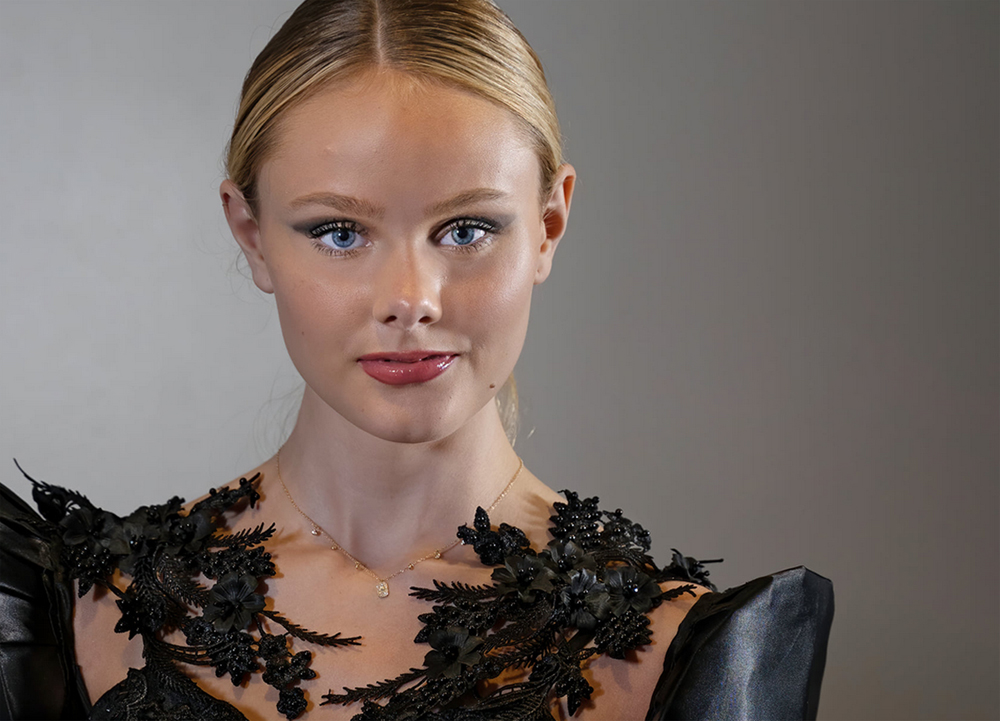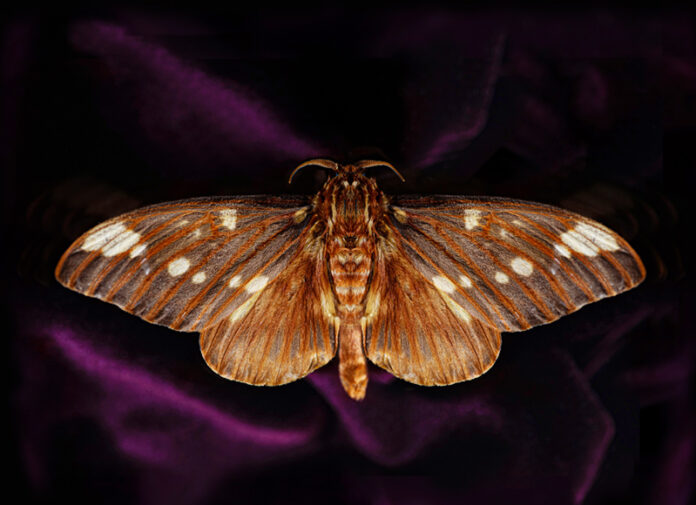The Lyne Raff Story
by
Bill Hedrick
 The southeast corner of the State of Texas might not be the first place where someone might look for an art exhibit. After all, it seems like a world away from Dallas or even Houston and the big city life. But, if you take a closer look, you will find a place dedicated to the visual art. It’s called the Art Museum of Southeast Texas, an institution with a mission of providing education, inspiration, and creative vision throughout that region of the state.
The southeast corner of the State of Texas might not be the first place where someone might look for an art exhibit. After all, it seems like a world away from Dallas or even Houston and the big city life. But, if you take a closer look, you will find a place dedicated to the visual art. It’s called the Art Museum of Southeast Texas, an institution with a mission of providing education, inspiration, and creative vision throughout that region of the state.
In the spring of 2022, AMSET hosted a rather unique photographic exhibit for a local photographer, Lyne Raff. The exhibit was titled, “Small Worlds: The Hidden Beauty of Insects.” That’s right… bugs.
Taking pictures of insects might sound strange to some who specialize in photographing people, products, or landscapes, but Lyne Raff looks at it quite differently. To her, photographing insects is another fascinating expression of the “artsy” within her. “Photography, as a discipline, is kind of split into two halves… the technical side and the artistic side,” she explains. “I admit it. I’m not technical!” Instead, Lyne refers to herself as “artistically motivated” and “driven by artsy.” She has always looked at photography as just another medium for an artist to use. To Lyne, photography is the same as oil paint, sculpture, or watercolors.
 You might even say that Lyne Raff was born into photography. In fact, her mother was a landscape painter and her grandmother was a talented amateur photographer in southwestern Oklahoma who loved capturing images of landscapes in that area of the state in the 1920s and 1930s. Her father, on the other hand, was a cowboy who was also into camera gear. “He was definitely one of those guys who liked the technical side of photography and taught me how to use a camera and gave me the chance to try different kinds of cameras. Dad was also interested in spy stuff and ultra high-resolution kinds of film. He taught me a lot about what film could do,” she recalls. “Dad always carried an Olympus PenE half-frame camera in his pocket and bought me a few old cameras on our various trips through junk and pawn shops across the west.”
You might even say that Lyne Raff was born into photography. In fact, her mother was a landscape painter and her grandmother was a talented amateur photographer in southwestern Oklahoma who loved capturing images of landscapes in that area of the state in the 1920s and 1930s. Her father, on the other hand, was a cowboy who was also into camera gear. “He was definitely one of those guys who liked the technical side of photography and taught me how to use a camera and gave me the chance to try different kinds of cameras. Dad was also interested in spy stuff and ultra high-resolution kinds of film. He taught me a lot about what film could do,” she recalls. “Dad always carried an Olympus PenE half-frame camera in his pocket and bought me a few old cameras on our various trips through junk and pawn shops across the west.”
Lyne grew up in Stillwater, a small town in Oklahoma. “I was lucky enough to have great high school teachers. My Art teacher got me interested in the connection between Art and History and depicting Light. She showed us Vermeer, Turner, and Rembrandt and showed us not only how they painted but why. When I saw Edward S. Curtis’ photographs not long after that, it felt like the same principles to me. His work, I thought, was exactly the same artistically as the paintings I’d been learning about.” From that moment on, Lyne would view photography as another method of expression for artists.
At that same high school in Oklahoma, two History teachers set up a darkroom and began teaching Lyne all about cameras, darkroom technique, and printing. One of those teachers was actually a cowboy and the other was the county crime scene photographer. “Both had some stories to tell from their careers,” says Lyne. “Learning from them gave me a desire to work with the darkroom process.”

By this time, Lyne was hooked on photography. “I had a big desire to read about every great photographer there was, try every kind of old camera I could find, and learn about various kinds of film and paper. eBay became my sin. At the time, you could easily get expired film, crazy papers, and weird alt-process chemicals from dealers around the globe.” By the time she was a student at Oklahoma State University, Lyne had her own darkroom and actually kept that going until just a few years ago when she sold her film camera collection to finance her higher-resolution Nikon and lenses. “C’est la vie!”
Lyne earned a Bachelor of Fine Arts degree in printmaking from Oklahoma State University and began her professional career as a book and greeting card illustrator and, not long after, became a graphic designer for book publishers as well. Then, tragedy stuck in the early 2000s when her sister, with whom she was very close, passed away. “For some time afterward, I could no longer paint or sculpt. So, after a suggestion from my Dad, I started photographing again.” It was just what Lyne needed to help her through this time of her life and she soon started a short-run equine and art magazine. “It changed my life,” she recalls. Sadly, however, her Dad never got to see it in print. “But he was my real inspiration for that project,” says Lyne.
She began her first issue with drum-scanned film but quickly became a digital convert. “It was the beginning of the all-digital era in publishing and printing and I had to learn how to photograph editorially and how to prepare large files for this new breed of high-resolution digital presses. I ran the magazine for 11 years and had a great time doing it. I also built up several thousand subscribers from every country in Europe, most of Australia, as well as every state in the United States. In addition, I got to photograph a wide variety of breeds of horses doing all kinds of activities and was able to meet with wonderful owners, trainers, and performers.”

In late 2005, Lyne bought her first digital camera, a Canon 20D. “It felt like the closest I had ever come to ‘getting’ the image that was inside my head,” she recalls. “Finally, what I ‘saw’ was actually coming out in the photograph.” In following years, as technology and resolution changed, Lyne went from Canon to Nikon. Today, she uses a Sony mirrorless camera.
 After spending more than a decade photographing horses, Lyne learned to be a portrait photographer. “The great Sue Bryce, one of the first wave of photographers with an online-based learning program, had an entire website education system for portraits. Having a continuous learning method, as well as a reference for methods and techniques, was an incredible way to continue to find new avenues of interest. I studied her system for about a year, and I can definitely say it improved my techniques.”
After spending more than a decade photographing horses, Lyne learned to be a portrait photographer. “The great Sue Bryce, one of the first wave of photographers with an online-based learning program, had an entire website education system for portraits. Having a continuous learning method, as well as a reference for methods and techniques, was an incredible way to continue to find new avenues of interest. I studied her system for about a year, and I can definitely say it improved my techniques.”
Meanwhile, the artist she started out as had always been moving around in Lyne’s head and in her work. It affected every scene that came into her eye and into her camera. Lyne often thought about paintings and art from her Art History days and how Vermeer, Sargent, Ingres, Eakins, Klimt, and others influenced her work. “They still do,” says Lyne. “Even if I’m looking at something as simple as a horse in an arena or a bug on a table, I still see Vermeer’s lighting, Eakins’ colors, and Klimt’s composition.”
But Lyne would also be influenced by old cameras and historical photography. She was fascinated with early processes like tintypes and ambrotypes and studied every one that she could find. There were times when she would take old Petzval and bellows lenses off her antique cameras and create mounts for them that would work with her Canon 5D. “I’m sure I looked less than professional, walking around with them. But having a Frankenstein-Petzval on your Canon was always a great conversation starter!”
According to Lyne Raff, photography is a skill that will, if you let it, keep you learning non-stop… and creating non-stop. It provides new ways to apply those things you already know into something new. “And good things can come from this!” she explains. “For me, I never thought I would be a good fit for Macro. It is highly technical and can be incredibly fiddly. Remember, I’m much more art-driven. Worst of all, there are no horses in Macro! But, for me, the process of taking macro images allowed me yet another way to apply an artistic point of view to what was a very new path for my work.”
That’s when Lyne Raff began photographing insects. Her favorite bugs are large, colorful moths and Regal Cicadas. “I think they are timeless and fascinating,” she explains. “And I can do it with an artist’s eye, too. What if you lit a big moth as if it was a painting? What if you photographed a cicada using the Golden Spiral Rule? What if you light-painted a group of bugs on a velvet background like a Dutch still life? There is storytelling, detail, color, and composition in these creatures that I find very inspiring. Once I learned the basic technical skills like focus-stacking and acquired specialty lenses, I soon figured out lighting methods that gave me the look I wanted in my images.”

Insects are something Lyne finds satisfying to photograph. After all, she has a great love for making storytelling images and experimenting with various techniques. But Lyne has also discovered that she loves making images that are more scientific-looking… captured moments to examine every bit of the specimen in all its beautiful detail. “I figure this is because of all those summers I spent as a kid catching bugs and critters and looking at them with a magnifying glass!”
But Lyne Raff is also known as an accomplished portrait photographer and commercial photographer as well. Her artistic skills also come in handy with copy and restorations of old photographs.
So, when people in the Beaumont area learned of Lyne Raff’s creative images of God’s smaller creatures, she became a local celebrity of sorts. Her exhibit at the Art Museum of Southeast Texas soon caught the attention of Bob Phillips and the Texas Country Reporter team, and the word was out. Hidden far from the hustle and bustle of Dallas and Houston was a talented artist who doesn’t even consider herself to be “technical.” But, for those of us who know true talent and how it is acquired over years of hard work and study, we recognize one who has mastered artistry with a camera. Congratulations, Lyne Raff, for the contribution you make to our profession!








